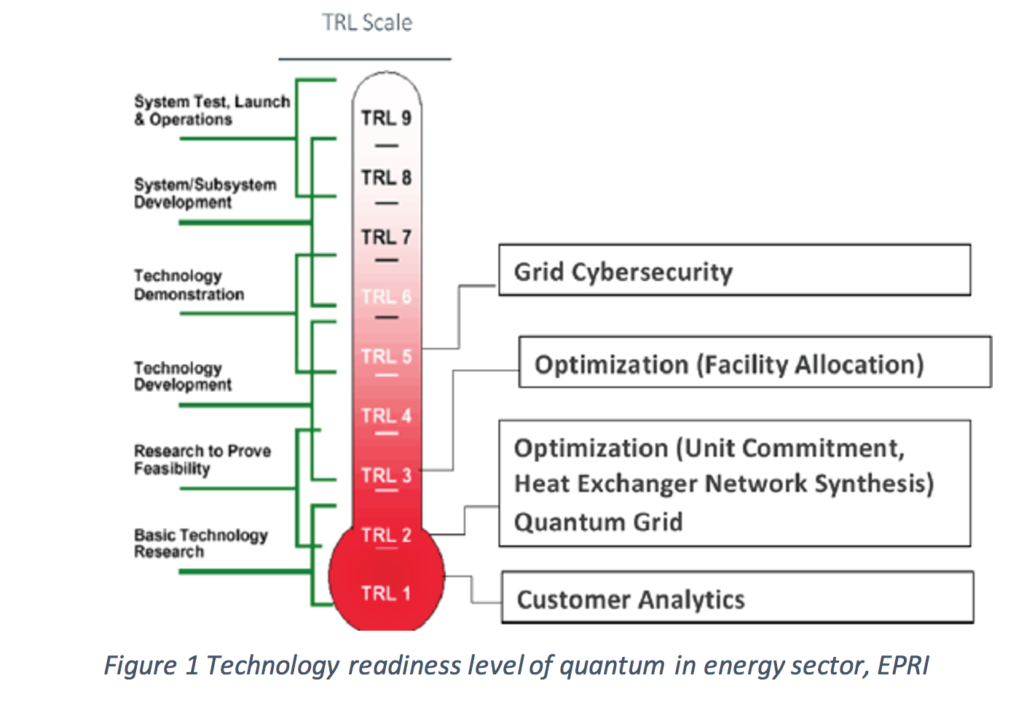A Quantum Leap for Energy and Power
From our coverage of other moon-shot technologies this year, you may be quick to roll your eyes at another seemingly far-out innovation. Quantum computing, long heralded as the next generation solution to complex problems that remain insolvable with current computing, could be on the cusp of realizing its potential in the energy and power sector. We are finding that despite some of quantum’s biggest wins for the sector being quite a way off, there is a wealth of near-term opportunity which corporates should engage with in 2020.
Why Quantum?
As the world’s energy networks expand, the complexity of the systems required to support these networks grow in parallel. The expansion of distributed energy resources and the emerging new load of classes, such as electric vehicles, exponentially increase the volumes of data needed to uphold, process and optimize grids. This growth also poses further strain on the security and communication infrastructures currently in place. In short, today’s computers are not ready for tomorrow’s grids.
Quantum technology is gaining momentum as a key enabler of the future because it:
- Solves complex large grid data optimization challenges
- Offers high-fidelity sensing
- Provides fail-safe communication and security.
While quantum computing has been researched conceptually since the 1980s, for the most part it remains largely based in the 1960s era of conventional computing. However, near term developments in the past 12 months have brought forward its market potential. An accelerated pace of innovation is bringing quantum into the focus in the commercial space, with venture investment from corporates coming in fast. With many players already engaged in the market, Quantum computing investments are projected to reach $1.9 billion in 2023, increasing to $8 billion by 2027.
Just as graphical processing chips can process data related to graphics exponentially faster than a computer’s main CPU, specific problems can be solved quadratically or polynomially faster with quantum processing. By exploiting the quantum effects of superposition and entanglement, a quantum computer can execute multiple computations simultaneously.
Some Applications in the Energy Sector:
For the energy sector, this high-speed processing can change across multiple applications:
- Grid Optimization: Accelerated processing of energy system data will allow grids to deal with a high penetration of volatile renewables and enable enhanced flexible and dynamic network operation within a system which includes billions of networked DERs. Problems such as grid topology control, synthetic grid inertia modeling and large-scale cross-network transactive energy will be more manageable.
- Energy Asset Optimization: Offers the potential to solve seemingly impossible modeling challenges for dynamic energy systems such as heat, wind and water flow on a large scale, reducing levels of uncertainly in today’s regressive algorithms.
- Grid Security and Communication: Enhances the complexity of cryptographic techniques using quantum key distribution and other emerging solutions to securely transmit important asset control data between nodes.
- Customer Analytics: Integrates and understands large volumes of customer data injected from smart meters, buildings and online user data to make better predictions on customer preferences and needs.
Indeed, given the reduced time needed to process problems, compared to today’s supercomputers, quantum technology can provide significant energy efficiency savings, when comparing systems on a specific task.
The figure below highlights the technology readiness level of emerging quantum computing applications in the energy sector:

Business Activities
Innovators are ultimately looking to push quantum technology to the conceptual tipping point known as quantum supremacy where a quantum system outperforms a conventional computing system on a specific task. Despite an array of challenges from cost and technical standpoints, the market is beginning to take shape with a variety of different business activities, with a goal to bring quantum technology to the masses.
Quantum Computing Hardware
Despite the well-established basic principles of quantum computing, the best method of approach remains undecided. One solution available today, known as adiabatic quantum systems, has been largely commercialized by innovator D-Wave. D-Wave has raised over $200 million, reported over 250 optimization applications including power system design, airline scheduling, chemistry simulation and automotive design. The solution is estimated to be more than 10⁸ times faster than simulation running on a single processor.
However, adiabatic quantum hardware remains a long way from quantum supremacy and will likely never be able overcome challenges like Shor’s algorithm, which currently breaks all common forms of cryptography and web communication.
The second popular approach is known as universal gate quantum computing. Much like today’s systems, these rely on qubits for basic quantum circuit operations. Complex algorithms such as Shor’s and over 50 other quantum algorithms should be able to run. Giants including Google, IBM, Microsoft and Intel have already poured hundreds of millions into its development, but the hardware space-race is still on. This September, industrial corporate Honeywell announced their quantum computer reached a “quantum volume” of 128, twice that of the next alternative in the industry. Shortly after, start-up IonQ announced it has achieved an “expected quantum volume” greater than 4 million, using another approach to the hardware design known as ion trap quantum computing.
Whatever hardware takes precedence in the future, there is no doubt the iterative improvements of innovators and incumbents over the next few years can already provide value to players in the energy sector and beyond.
Quantum Computing Software
The current software approach is analogous to existing programming approaches and lacks the ability to realize the hardware’s full potential. Players including D-Wave, IBM, and Microsoft have developed robust initial toolkits, but a range of start-ups are looking to disrupt the market with novel approaches.
Founded in 2017, Zapata Computing has raised over $25 million in equity capital to-date in their attempt to create a hardware-agnostic quantum operating system. With backing from players including BASF Venture Capital, Comcast Ventures, Honeywell Ventures and Robert Bosch Venture Capital, Zapata is aiming to strategically provide value for industrial players as early as next year, helping corporates to understand how quantum optimization can influence existing processes. Other start-ups including Xanadu, Cambridge Quantum Computing and 1Qbit are also developing architecture-agnostic, enterprise quantum solutions to develop algorithms which will be ready in the next few years.
Quantum Fragility
Despite the amount of progress made in the last few years, there is no doubt that quantum’s biggest challenges are yet to come. There is an array of hurdles, including:
- The quality and error frequency of current systems remains high. If systems are to be scaled, further work is needed to increase qubit state reliability.
- Controlling quantum computers requiring control latency below tens of nanoseconds, which today’s modern technology still struggles with.
- The fragile state of quantum computers requires operation at very low temperatures. This reliance on low temperature demands huge power requirements for operation and remains inefficient for sustained operation.
- Finally, if systems are to be scaled to use more qubits, systems need to be massively simplified to reduce the number of lasers and wires required for qubit control.
Keep an Eye on
- Quantum sensing: A handful of players are also developing proprietary quantum technology for ultra-high-fidelity sensors. Innovators such as Qnami (offering a platform for the analysis of magnetic materials at the nanoscale) have been raising private capital in their goal to commercialize. For the energy sector, grid data fidelity is a core function of system reliability. As grids increasingly suffer from outages, increased sensing functionality will also become a vital part of the mix. See our previous insight on digital grid resilience to learn more on this topic.
- Quantum communication: Innovators are also starting to investigate developing quantum secure communication solutions. Innovator Quantropi was founded in 2018 to develop quantum secure communications services using ultra-high-entropy quantum keys.
The narrative around quantum globally seems to be changing from one of theoretical science, to a narrative based on commercial potential, industrial impact and player readiness. Corporates in the energy and power industry need to be prepared to embrace quantum as soon as solutions are available and should be already investing today to ensure they have an edge in the next decade.


